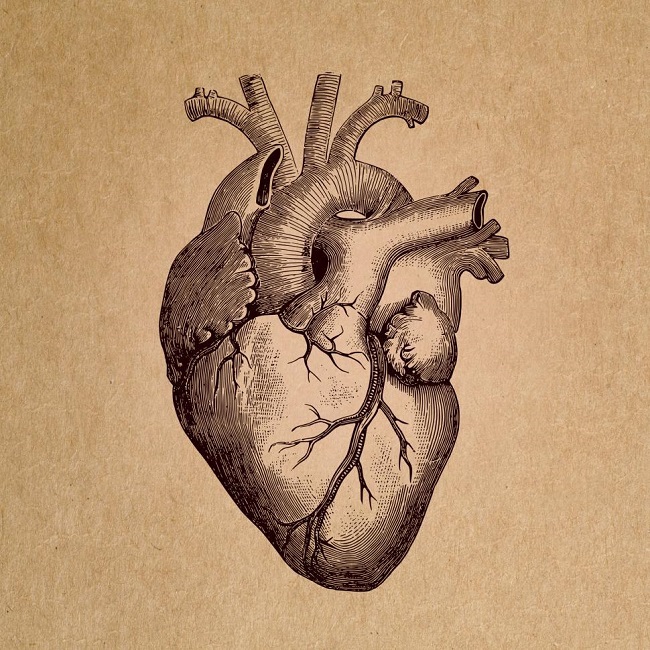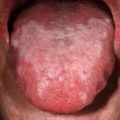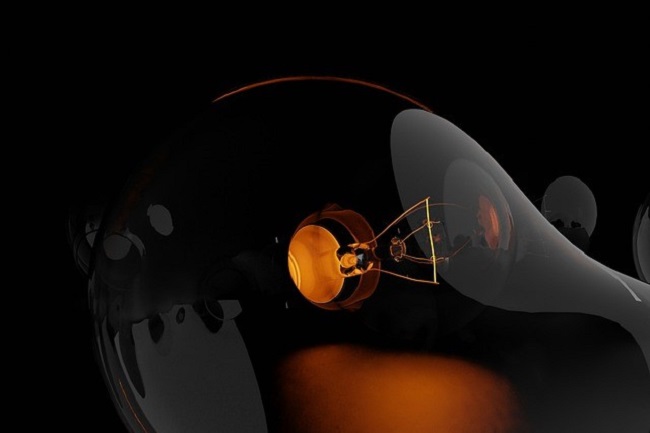In my quest to understand calcium (Ca2+) regulation in the COVID heart, the thiamine deficient heart, and the negative cardiac reactions sometimes observed when formerly thiamine deficient individuals are given supplementary thiamine, two papers have come to my attention that deserve consideration. The first paper, from 1979 explores the regulation of Ca2+ relative to cardiac tension across three phases of hypoxia and subsequent re-oxygenation. The second paper, from 2007, looks at the potential role of thiamine deficiency in conditioning the heart to hypoxia and potentially forestalling reperfusion arrhythmias.
By way of background, thiamine deficiency induces molecular hypoxia, which over time, is associated with a number of deleterious functions including the impairment of ATP production and the dysregulation of Ca2+ management. Thiamine deficiency can be both a cause and consequence of heart disease and subsequent heart failure. Thiamine repletion improves outcomes in the majority of cases. For a small percentage of individuals, however, thiamine repletion causes negative reactions which are difficult to manage, especially when they affect the heart. I believe these reactions involve aberrant Ca+ regulation, first from the thiamine deficiency itself and the resultant downregulation of energy production, next by an induced molecular hypoxia that reduces mitochondrial oxygen utilization capacity and further imperils ATP production, and finally by the dysfunction and failure of the highly ATP dependent ionic transport systems that inevitably skew Ca2+ regulation towards a hyper-excitable state. Similarly, I believe what we are seeing in the more severe cases of COVID, involves a highly expedited version of this process in different tissues and more globally. COVID severity is necessarily related to mitochondrial competence, or lack thereof, as the case may be. In the heart specifically, research suggests that COVID heart damage involves acute tissue remodeling propagated by the virus. This seems to be consistent with what is seen with the much the longer in duration process of heart failure, the end result of which, is calcium dysregulation, dysrhythmia, and sometimes, death.
I have outlined some of the mechanisms in the papers linked above, but continue to struggle to put all of the pieces together. The two papers reviewed below are pieces of that puzzle, suggesting that there is a temporality to reactions that we should be investigating. As a way to fully comprehend the impact of temporality on these processes, I am reviewing these papers here.
Hypoxia and Calcium
The first paper, entitled Hypoxia and Calcium looks at the changes of Ca2+ regulation associated with duration of hypoxia in the cardiomyocyte across different studies, using different animal models. Based upon available research at the time (1979), the authors propose three phases of hypoxic response, marked by duration of hypoxic event and mechanical changes to how the heart muscle contracts (active tension) and relaxes (resting tension).
- Phase 1. An immediate reaction where active tension development is suppressed but resting tension is not.
- Phase 2. Short term adaptions observed up to around 10 minutes of hypoxia where active tension declines but more slowly as time progresses and resting tension begins to increase.
- Phase 3. Longer term adaptations hypoxic states greater than 10 minutes where active tension ceases altogether and resting tension increases precipitously.
What I found particularly interesting are the roles of Ca2+ and ATP availability and pattern of response to contractility at each of these junctions. I believe these patterns could help predict response patterns to thiamine repletion and perhaps guide treatment.
Calcium Kinetics and Early Hypoxia
In the acute early phase of hypoxia, phase 1, the authors note that while there is a shortened action potential, there is no noticeable increase in the inward current of Ca2+ relative to the change in active tension; that inward flux of Ca2+ happens much later relative to the increase in peak tension. Indeed, changes in calcium influx do not develop until after the increase in active tension – in this early phase of hypoxia.
They speculate that such an inward current might be disguised by the concurrent outward rectifying potassium (K+) current, but would still not confirm the suggested Ca2+ hyper-excitability argument in the initial phase of hypoxic response. They propose instead that there may be displacement of intracellular Ca2+ due to impaired storage capacity that affects contractility. They further hypothesize that during these early stages, localized pools of ATP and creatine phosphate (CP) are taxed first and may or may not be sufficient to manage this process. Recall, the creatine/creatinine ratio may be used to indicate an impending or active energy deficit. To the extent intracellular calcium transport and release from either the mitochondria or sarcoplasmic reticulum is highly energy dependent, insufficient ATP and/or CP, this becomes problematic very quickly and may be key to whether one can withstand this early stage. Low pH, acidosis, and elevated lactate also contribute to the reduction Ca2+ influx and efflux. Nevertheless, if the hypoxia is resolved at this stage, the authors suggest full recovery is possible.
Of note, thiamine deficiency induces each of the changes noted in the first phase of this hypoxic reaction, including the hypoxia itself. Thiamine deficiency induces intracellular potassium deficiency, potentially disguising any excess inward movement of Ca2+. It also diminishes ATP production and creatine phosphate levels which would impact intracellular Ca2+ storage and management, and finally, it is associated with a lower pH via elevated lactate, as the enzymes involved in lactate metabolism are thiamine dependent. Conceivably though, with the obstructive/ischemic type of hypoxia noted above, if thiamine is replenished here, full recovery should be possible.
Progressive Hypoxia and Waning Energy Capacity
At phase 2 of the hypoxic response we see that heart’s ability to contract, maintain active tension, is further suppressed while resting tension, the inability to fully relax, continues to climb. Still though, there is no increase in the influx of Ca2+. In fact, Ca2+ appears either reduced or unchanged. The authors suggest that at this phase, the changes in contractility are still due to poor intracellular Ca2+ regulation and not an influx of extracellular Ca2+. It is here though, that we begin to see the progression of energy failure, most notably impacting the ion transporters both on the cell membrane and on the mitochondria and sarcoplasmic reticulum. This, of course, begins the march towards ultimate energy failure. As transport mechanisms begin to fail, Ca2+ and sodium (Na+) homeostasis are derailed, each require additional energy (ATP) to manage; energy that is impossible to manufacture given the lack of molecular oxygen. It becomes a death spiral. Here too though, the authors suggest some degree of tissue recovery is possible, up to a point, but that there will damage. How this would impact the totality of organismal health is not clear.
I suspect that this where we find many of the folks who will go on to suffer from the thiamine repletion reactions. Underlying their reactions to thiamine is the asynchrony of tasks that comes when the ability to consume and utilize molecular oxygen is restored and ATP production comes back online. To this point, the individual is likely experiencing and adapting to a severe and spiraling state of energy deficiency with longstanding molecular hypoxia and dysregulated ion transport. Per the study above, we would expect that they would be experiencing intracellular K+ and Na+ deficiency, poor and intracellular Ca2+ management, but perhaps also a deficiency of intracellular Ca2+. This in the face of a seemingly elevated state high extracellular Ca2+. Unwinding these patterns would require a lot more than simply replenishing thiamine and other nutrients, but careful consideration of the timing and dose of each. As I mentioned in my previous paper, too much, too soon, would effectively shut the entire system down via potentially multiple mechanisms.
Prolonged Hypoxia and the Calcium Tsunami
It is not until after more prolonged periods of hypoxia, in Phase 3, that we see the attendant increased influx of Ca2+ from the extracellular to the intracellular space. Perhaps it is a last ditch attempt to spur contraction or perhaps it is simply a marker of the final phase of energy failure. Here we have mitochondrial deformation and collapse which would be expedited by re-oxygenation inasmuch as re-oxygenation will increase the flood of Ca2+ into the cell at a time when ATP availability is low and intracellular Ca2+ uptake, an ATP dependent process, is limited. Though not measured, I would also suspect elevated necrotic activity and extracellular mitochondria, both are emblematic of chronically low ATP. At this juncture, the re-introduction of oxygen and possibly also thiamine, would stress the already exhausted mitochondria pushing them closer toward collapse, particularly if done rapidly, as would be requisite in this type of hypoxia. These processes would then initiate the flood of Ca2+ into the cell, the hyper-excitability noted with ischemia/reperfusion injuries and the arrhythmias associated therewith.
From Molecular Hypoxia to Frank Hypoxia: Missed Opportunities
The timing of this great influx of Ca2+ is what struck me most about this paper. It does not happen until the later stages of hypoxia, until energy failure becomes the dominant variable, underpinning all of the others. Everything else until that point involves adaptations that are potentially reversible. The same can be said of impending heart failure and COVID heart damage. Although considered different disease processes, with different precipitating events and entirely different time scales, underlying each is hypoxia and energy failure and the reactions associated therewith. Arguably, if we can prevent the frank hypoxia and associated energy failure, we could possibly prevent the deadly arrhythmias.
If we dig a little a deeper, before we get to a visible reduction in oxygen consumption and utilization, absent obstruction, we have more local molecular hypoxias; the inability of cells to respire efficiently, of the mitochondria to consume and utilize available oxygen in the production of ATP due to a lack of thiamine, magnesium and other nutrients. Absent outright starvation, all of this happens over the course of years, if not decades, with subtle shifts in metabolism that are not often associated with an emerging hypoxic state.
The Re-oxygenation and Replenishment Conundrums
Barring prevention, how do we re-oxygenate previously hypoxic tissue without setting off the tsunami of calcium influx linked to reperfusion injuries and the deadly arrhythmias that often ensue? Similarly, how do we replenish thiamine in severely deficient individuals without setting off those same reperfusion cascades? That is where the second paper comes in to play. In this paper, researchers found that thiamine deficient hearts do not develop the dangerous reperfusion arrhythmias common with thiamine sufficient hearts. In other words, thiamine deficiency protected against the arrhythmogenic effects of re-oxygenation. The mechanism, it appears, are the already downregulated calcium transport channels, both intracellular and extracellular, and the reduction in ATP availability to power these channels sufficiently, thus reducing the opportunity for Ca2+ induced over-excitability and asynchrony upon re-oxygenation. Before I begin to connect some dots, let us look at the research itself.
Study Details: Abolition of Reperfusion-Induced Arrhythmias in Hearts From Thiamine-Deficient Rats
For this study, the authors used two groups of male Wistar rats. The control group was fed a normal diet and other group, a diet that was thiamine deficient (TD), for 30 days. All other variables were held constant. At 30 days, the animals were sacrificed and their hearts surgically removed. The hearts were maintained in a perfusion fluid with constant oxygenation until equilibrium was reached. Upon which time, the left coronary artery was ligated (tied off) for 15 minutes and then reperfused for another 30 minutes. Electrical activity and a variety of variables were measured. Similarly, cardiomyocytes from control and TD animals/hearts were isolated and analyzed.
A few things to note. First, there are obviously differences between rodents and humans and between in vivo and ex vivo hearts and tissues. Second, 15 minutes of hypoxia is a long time and represents phase 3 of the change parameters discussed above. As such we would expect to see the inward calcium tsunami, reduced ATP, poor SR and mitochondrial sequestration and mitochondrial deformation upon reperfusion. In other words, the tale tell signs of impending injury. All of those things were observed in both sets of animals, but the degree to which they occurred was markedly different. For the thiamine deficient group, these markers were significantly reduced.
In the TD group there was almost no change in resting tension before or during the occlusion, or during reperfusion. In contrast, the diastolic tension in the tissue of the control hearts shot up upon reperfusion. In parallel, the TD hearts developed slower and smaller Ca2+ transients (movement in and out of the cell), taking 27% longer to reach peak tension, in addition to a reduction in 23% SR load. In other words, far less Ca2+ movement and excitability relative to the control hearts. In parallel with these reductions, the TD hearts did not become arrhythmic as the control group. Of interest, the researchers took a group of animals who were TD deficient for 30 days, then fed them the control diet, which was thiamine sufficient, for another 7 days, sacrificed them and performed the same experiments. These animals experienced the same patterns as the control group with the same Ca2+ induced arrhythmias.
The authors of the study speculate that thiamine deficiency pre-conditions the heart to hypoxia and reperfusion injuries by downregulating ATP production, ion transporter activity, SR open-time and all of the other variables we discussed above. Since thiamine deficiency is also the cause of heart failure, often in the form of deadly arrhythmias, this finding was quite surprising. Perhaps a better way to look at these results, however, is that the thiamine deficient hearts were simply too worn out to produce an excitatory reaction thus dispelling the impetus for arrhythmia.
To disabuse anyone of the notion that inducing thiamine deficiency is the answer to preventing reperfusion injury, if a rodent is maintained on a thiamine deficient diet for too long, not only do they suffer all of the traditional symptoms associated with thiamine deficiency in humans with a serious decline in health, but within about 8 weeks, will die from cardiac arrhythmia. I should also mention that one month in rodent time equals about three years in human time. This means that the 30 day thiamine deficient protocol, is equivalent to a three years long state of thiamine deficiency in humans. The damage at this point is quite significant. For humans, thiamine deficiency or insufficiency waxes and wanes across time as thiamine status changes by diet and need. It is rarely as blunt as in the induced experimental conditions used in animal research. However, when it is blunt, such as in cases of errors in the formulation of parenteral feeding or infant formula, starvation, or gastric bypass, 30 days is quite sufficient to induce serious and sometimes deadly cardiac reactions. In that regard, the temporality of such a deficiency may be more closely related to rodent models than appreciated.
What Do These Studies Mean?
If we look at hypoxia as a key outcome in thiamine deficiency and its impact on Ca2+ regulation as marker of said hypoxia, then we must also consider the role chronicity and severity of the thiamine deficiency when we consider thiamine repletion. There is clearly a temporal relationship to the degree of Ca2+ adaptations relative hypoxia and thus to thiamine deficiency. That relationship is likely manifest in the pattern of heart rhythm during the deficient state and certainly during the repletion state. To the degree that those electrophysiological patterns could be identified in advance of replenishing thiamine and/or in some sort of thiamine challenge test, where patterns are monitored pre-supplementation and again with a smaller dose than is typically given for cases of frank thiamine deficiency, we might be able to mitigate the arrhythmogenic responses that so often lead to troubling outcomes. What any of this looks like though, requires additional research not only to connect the electrophysiological patterns to potential thiamine repletion issues, but also, to tie those patterns to the potential molecular changes to be mediated.
We Need Your Help
More people than ever are reading Hormones Matter, a testament to the need for independent voices in health and medicine. We are not funded and accept limited advertising. Unlike many health sites, we don’t force you to purchase a subscription. We believe health information should be open to all. If you read Hormones Matter, like it, please help support it. Contribute now.
Yes, I would like to support Hormones Matter.
Image from: Jack Moreh at freerangestock.com.
This article was published originally on February 22, 2021.














Does not CO2 produced by step 4 of the ETC (Cytochrome c Oxidase) in the blood bind calcium and is the strongest vasodilator at the same time, stronger and healthier than excessive NO, the precursor of peroxynitrite, which is a very strong radical?
Hi,
I have been following your research on this site for about a year now. I have been trying to regain my health for about 5 years. High stress and trauma resulted in the decline.
No major disease that I know of. Mostly very challenged with digestion. Previous to the decline I had perfect, like clockwork bms and could eat anything without trouble.
Too much to go in to right now, but I am slowly making gains.
For a while I was researching SIBO solutions. I believe that may be how I found you initially. Maybe an article by Elliot. I started taking thiamine hcl (can’t do sulfur compounds). I noticed some improvements in some areas. I found that every day was too much for me. So I have been using thiamine for several months. The only other b vitamins I take are pantothenic acid and biotin. Recently I decided to quit cold turkey with the b vitamins. It had been nearly a week without taking them. I started experiencing arrhythmia several days ago. It would not let up no matter what I did (acupressure, lemon juice, calming breaths etc). I was not under any additional stress or anxiety. I thought about what had I done different recently…no pantothenic acid came to my mind at first. I looked up pantothenic acid and arrhythmia which led me to an article by
Dr. Lam (specializes in adrenal fatigue). Low and behold there it was…thiamine deficiency and arrhythmia. Needless to say, today I took 50 mg of thiamine hcl and pantothenic acid. Arrhythmia has quieted significantly. I expect more improvements as the week goes on. Even though I took both thiamine and pantothenic I will not know which one really is helping in that area. As a note, I drink 3-4 cups of coffee a day.
I really don’t like self-prescribing nutrients for myself without expert counsel and proper labs. I have made a lot of mistakes with trying different supplements and food plans. It’s just what I have to do because of resources.
Thanks for all the info you guys put out there. With my laymens knowledge I try to make sense of it all.
Hi Dr Marrs,
Given the apparent difficulties for some with thiamine replenishment by direct supplementation as you describe, do you see a role for a low carbohydrate, high nutrition density diet high in thiamine, e.g. keto/carnivore, or do you think this is a) not up to the task, or b) liable to be similarly dangerous? Commonly paired with which is intermittent fasting, which is said to promote autophagy, or cell regeneration. Do you see a role for this in helping Covid long-haulers?
In general, I am against intermittent fasting. I know that goes against the current dogma, but in someone who is already micronutrient deficient, the stress of fasting adds even more problems. They are already malnourished at the mitochondrial level, despite what is often perceived as over-nourished.
As far as the type of diet one ought to utilize, always whole, organic foods. Whether keto or a lower carb diet is needed, I think comes down to the phase and severity of the deficiency. Switching fuel sources abruptly in an already essentially starved individual could be dangerous.
With COVID longhaulers, while cleaning up the diet is necessary, it will not be sufficient. One has to tackle those micronutrient deficiencies. The current food supply, even healthy foods, is woefully inadequate because of the what we have done to the soils, air and water. Foods today contain a fraction of the nutrients they did just a few decades back. And in general, diet alone is insufficient to counter all of the toxicants modern humans are exposed to.